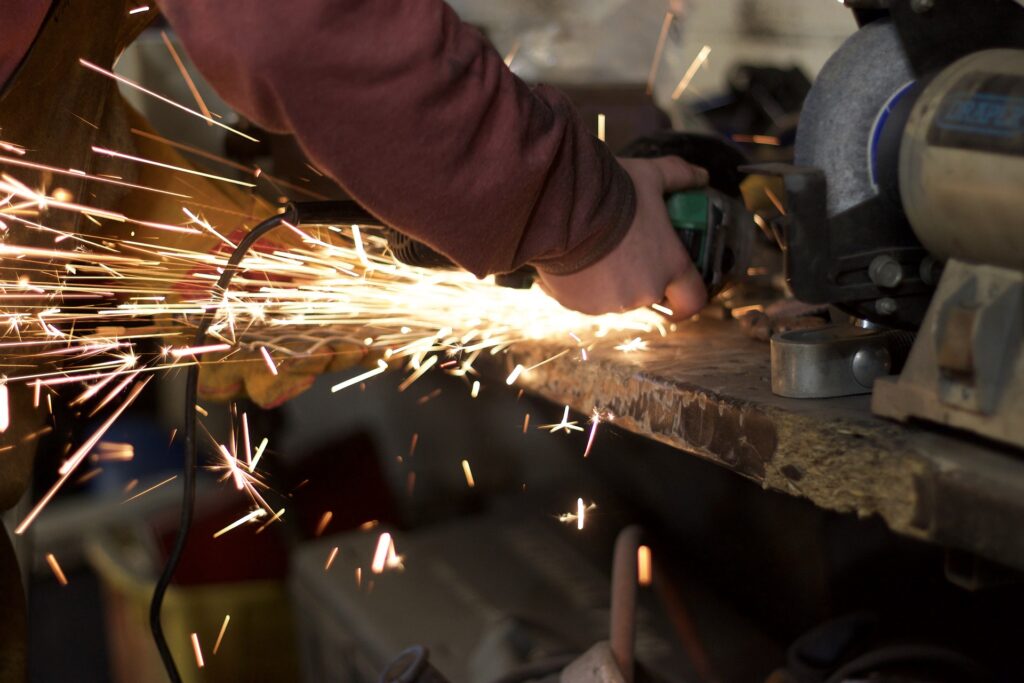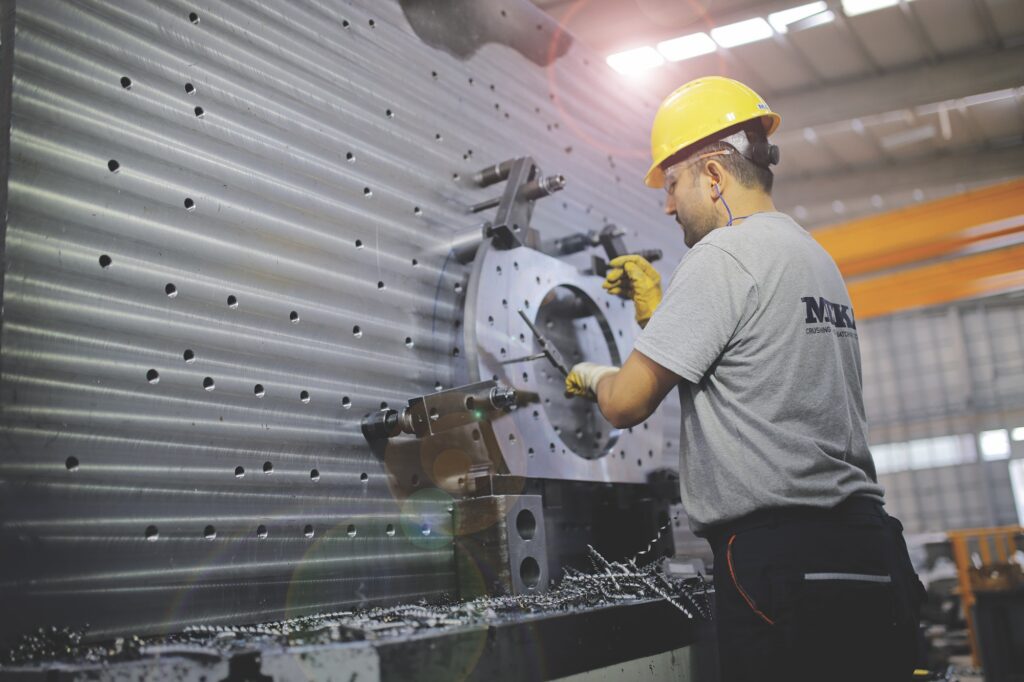With rapid advancements in digital transformation reshaping the manufacturing industry, it’s getting harder and harder for warehouse managers to predict where their business might be years, months, or even weeks from now. At the same time, the industrial internet of things (IIoT) is creating new ways to collect and analyze warehouse data to help streamline processes, cut down costs, and provide adaptable companies with clear advantages.
While all these new technologies sound like a boon to manufacturers everywhere, they also come with their share of challenges, as well – and it’s these manufacturing tech challenges that are forcing warehouse managers to look for newer, better tools to manage their production and workflows with. As it turns out, one of the most sophisticated manufacturing technologies of all is the digital twin.
What Are Digital Twins and How Are They Created?
Digital twin applications are completely digital replicas of a physical asset, often used by manufacturers to improve their decision-making, development, and monitoring processes. But before we dive any deeper into the various capabilities brought on by digital twins, let’s first go over how they’re created and how they work.

What Are Digital Twins?
As virtual counterparts of real-world assets, digital twins can seem like something straight out of science fiction – but their real-life existence is based on the latest in real-world technological intelligence. Just like a physical twin is identical to his or her sibling(s), the same holds true for digital twins acting as a virtual model of a process, product, or service – a completely accurate, yet fully virtual representation of a physical counterpart.
Within the manufacturing industry, physical objects are being accurately emulated by digital twin avatars, often taking advantage of thousands of high-tech sensors which collect data on a variety of specs and dimensions (including everything from the factory’s environmental conditions to the machinery’s performance stats). All the while, this data is being constantly communicated to the digital twin, allowing engineers to leverage real-time data to monitor and understand the product and performance functionality.
For example, a robotic manufacturing arm may contain a high-tech sensor designed to collect data on product line movement speed, while another sensor captures information about internal/external heat. All of this data can be leveraged by manufacturers to further optimize workflow in the future.
How Are Digital Twins Created?
To create a digital twin, you first have to collect data from a variety of sources, ranging from manufacturing and operational data to in-depth physical specifications. Next, you would need to integrate that data with advanced AI sensors that can create an accurate, physics-based model of a physical asset. This can be done even if the real-world counterpart doesn’t actually exist yet to give your company a head start on product development and R&D.
How Long Have We Had Digital Twin Technology?
One facet of digital twin technology that surprises people is the fact that the necessary technology has been around for nearly two decades. In fact, the concept of the digital twin has been around since the early 2000s; it’s only thanks to recent advanced technologies such as IoT and machine learning that we’re finally able to bring this plethora of data together, contextualize them, and give them “life” to narrow the gap between the digital and physical worlds for industrial applications and beyond.
What Can Digital Twins Do For Manufacturers?
By allowing manufacturers to create virtual representations of nearly any physical asset, or link those representations into a model of a process, digital twin applications provide unprecedented ways to use nonstop streams of real-time data. It’s important to remember that the strength of digital twins lies in being more than static replicas of real-life products. Digital twin applications create value by providing an abstraction layer that allows industrial professionals to:
- Monitor and extend the life cycles of various devices and their assets.
- Optimize daily workflow by simulating potential scenarios and outcomes more accurately.
- Cut down on operating costs by detecting and responding to physical issues sooner.
- Prevent costly mistakes and errors by anticipating production line and development faults.
Two industrial applications of digital twin technology have exceptional opportunity to be high leverage if used properly: production and customization.
Digital Twin Applications for Production & Engineering
By allowing manufacturers to create intricate simulations of real-life products, digital twins streamline engineering processes. That’s because the digital twin replicas are usually created before their physical counterpart, allowing them to function as a picture-perfect simulation of what the product should be. With each and every iteration of the digital twin, manufacturers capture more and more real-life data, allowing them to continuously refine and improve their replicas for endless realism and accuracy.
These benefits are especially useful when it comes to more complex product-line engineering, wherein multiple versions of a product are frequently worked on by multiple teams simultaneously. Many employees working on many different versions of a product over prolonged periods of time inevitably leads to inefficiency. To cut down on wasted hours or materials, engineers create multiple side-by-side digital twins. These can be divided into separate iterations based on department, which can then be tested against the varying requirements and settings with greatly reduced confusion and threat of error.

Digital twins can also enhance operational efficiency by predicting production failures safely through low-cost and low-risk simulations. This allows manufacturers to adjust their production line parameters within the twin to test out alternative scenarios, without ever risking any actual production or equipment. Successful simulations give engineers invaluable information about optimal parameters for their products. Similarly, future products can be developed with greater insights based on past simulations and subsequent real-life performance.
Digital Twin Applications for Enhanced Customization
Customer input has always been an invaluable asset for manufacturers, but with so many different sources of feedback to take into account, it’s not always easy to account for comprehensively. As a result, many manufacturers struggle to find the most effective way to incorporate their customer feedback into their development processes, especially as the demand for increasingly customizable products and services increases. Just think about all the possibilities to consider: everything from color palette to material composition to width, height, and depth specifications can be subject to scrutiny depending on what you’re manufacturing.
Conveniently, digital twins are giving designers and engineers the ability to push the limits of what’s possible in regards to customization. From the earliest parts of the product design stage, digital twins are making it easier and most cost-efficient to evaluate different permutations of a product based on large amounts of customer feedback, allowing creators to integrate more data and feedback into their customization capabilities.
For example, imagine being able to create numerous digital replicas featuring different colors, widths, lengths, and other specifications. This allows you to better capture your customer preferences in a digital twin to generate a better picture of ongoing demand twins. By using digital replicas to visualize different parameters without costly real-life designs, you can also predict and understand how these different configurations will affect your product performance.
This can also come in quite handy during the troubleshooting and quality assurance processes for your many product variations, as manufacturers can now identify and take note of any potential mistakes, defects, or errors within their digital twins before their real-life counterparts ever come into existence.
Thrive in the Fourth Industrial Revolution
As the Industrial Internet of Things bridges the gap between digital and physical systems, there’s little doubt that your digital transformation plan is an existential consideration. If your company is not currently utilizing or planning for technology that leverages the massive potential realized by the high-technology breakthroughs like digital twin technology, you may soon find that you’re falling behind your more adaptive competitors.
If you have questions about applying digital twin to your own manufacturing processes or introducing the IoT to your shop floor, contact our Manufacturing Practice Lead, Drew Lewis at drew.lewis@projekt202.com.
